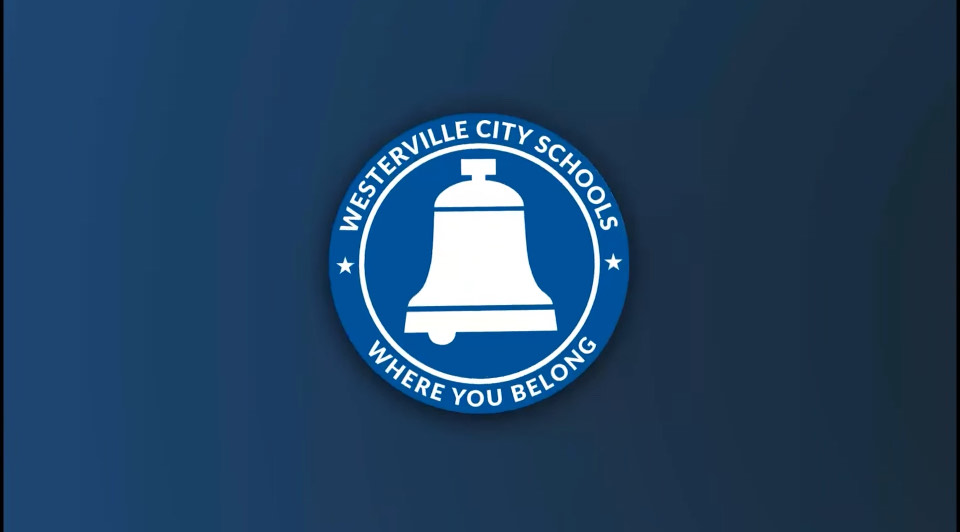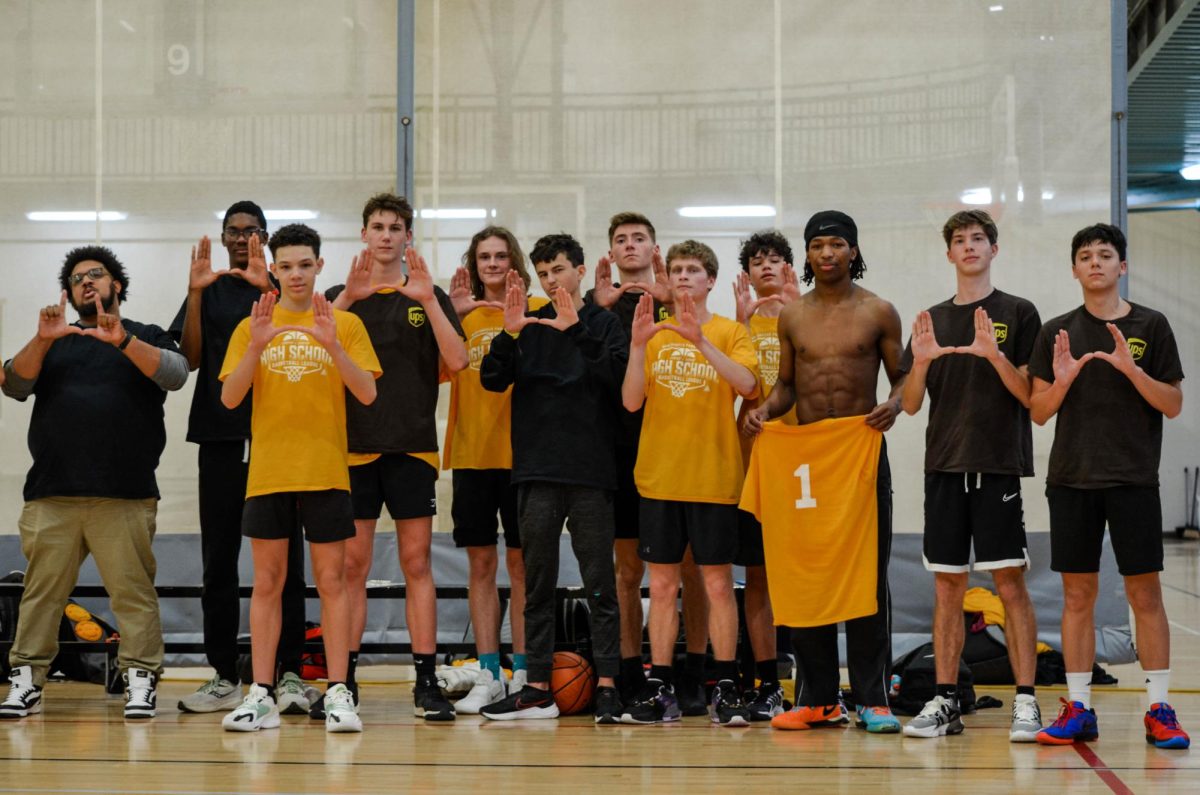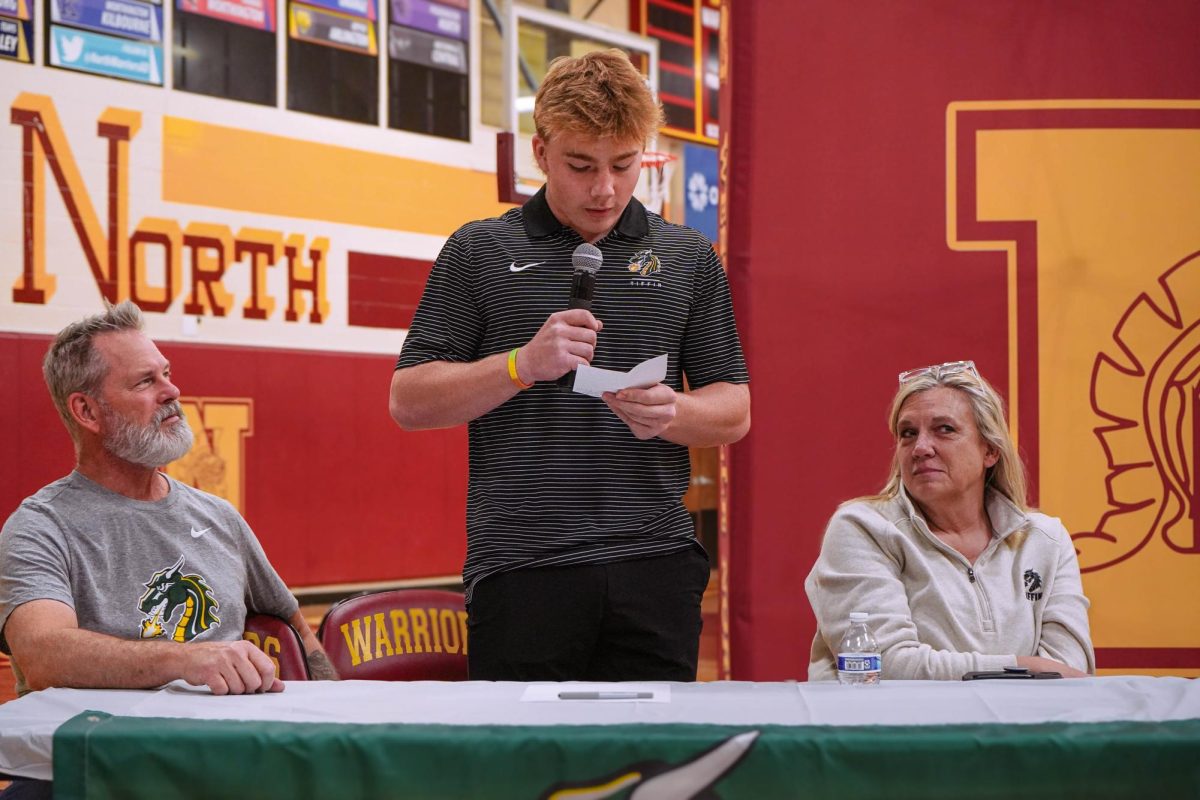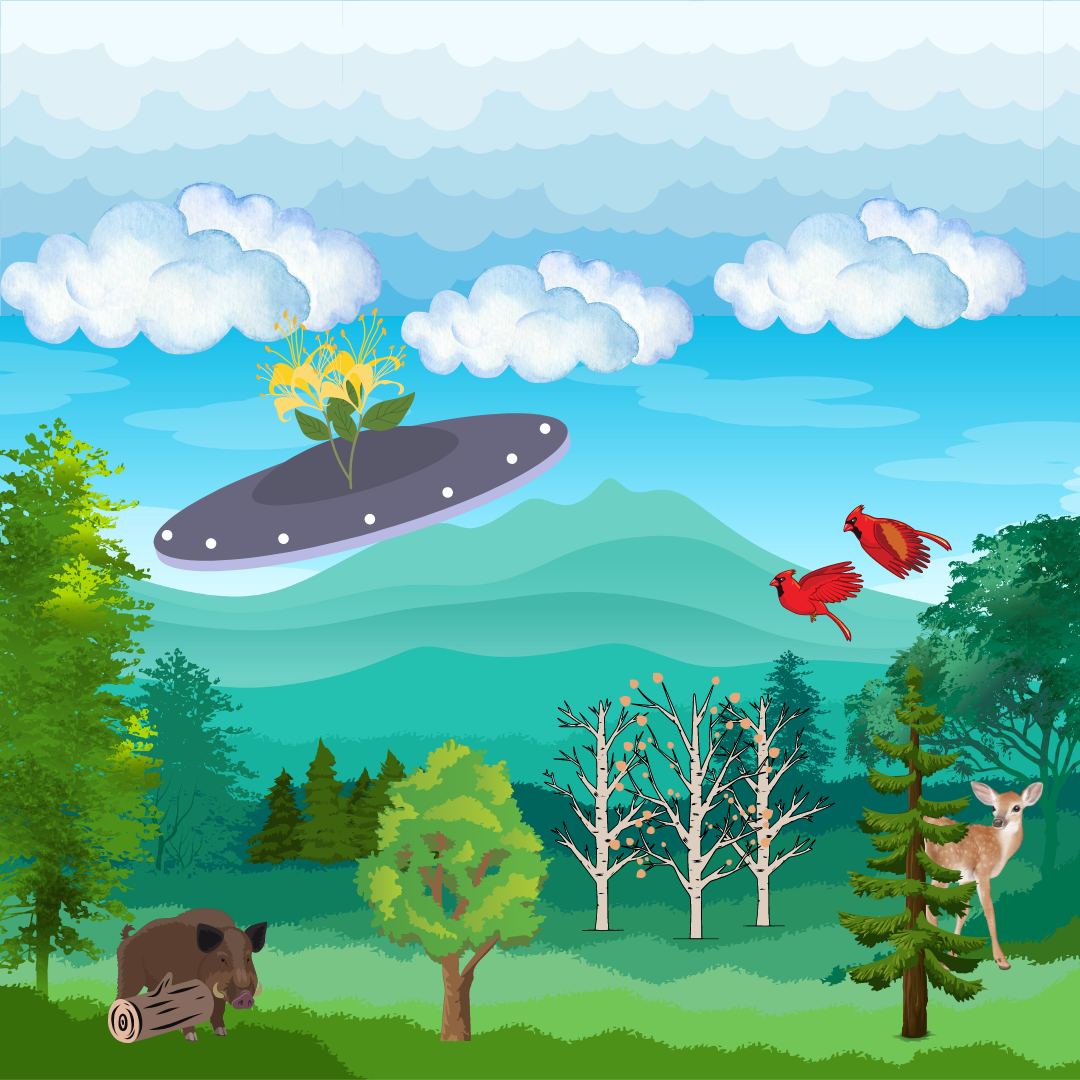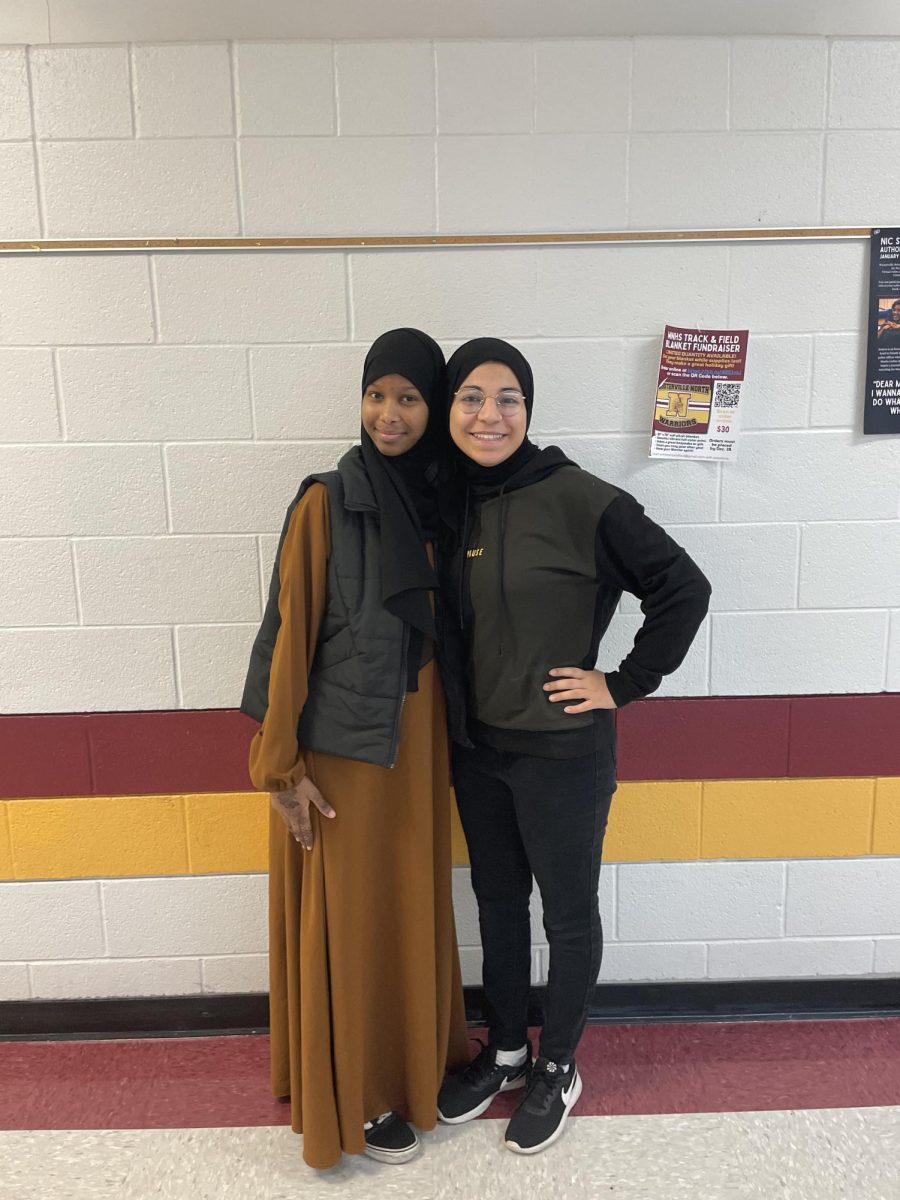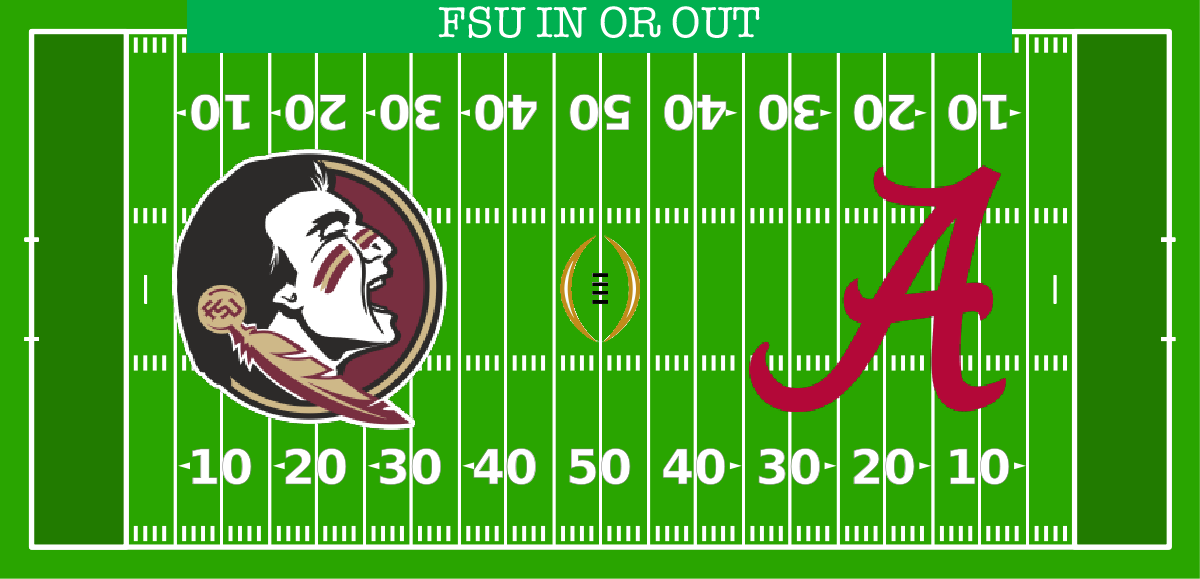The sights of nature can be relieving to some and relaxing for others. However, these natural sights are becoming increasingly unnatural as areas get infested with non-native plants and bugs which can increasingly disrupt Ohio’s native ecosystems. Common examples of invasive species include the Amur Honeysuckle, a woody shrub, feral swine, as well as insects such as the spotted lanternfly.
Invasive species can be introduced into an environment through many different ways, mostly accidently. These species usually arrive unintentionally from foreign trade due to how quickly goods can be shipped across the world. The National Wildlife Federation says, “Ships can carry aquatic organisms in their ballast water, while smaller boats may carry them on their propellers. Insects can get into wood, shipping palettes, and crates that are shipped around the world.”
Intentional species introduction is also a factor as certain species do have certain benefits. Some have been introduced as they can provide medicinal uses or for horticulture. Often these particular species are contained and do not spread beyond the initial area they are introduced to but accidentally introduced species can get out of hand if they can reproduce frequently and resist environmental factors that would otherwise limit the growth of native species.
The impact of invasive species can be incredibly damaging. In the United States, “Approximately 42 percent of threatened or endangered species are at risk due to invasive species,” (National Wildlife Federation). Developing problems can be seen right here in central Ohio with the Amur Honeysuckle. It is a woody shrub, originally native to northeastern Asia. Originally introduced during the mid 1900’s, Honeysuckle can now be seen all over the state as well as throughout the eastern United States. They can spread rapidly through their small bright-red fruits which are consumed by different bird and mammal species and their seeds subsequently dispersed through droppings.
Problems can also arise because of their tolerance to Ohio’s environment. Its growth is very rapid and can tolerate intense sun, shade, drought, heat, and extreme cold could lead someone to mistakenly believe that it is a well adapted plant to Ohio. However, “Amur Honeysuckle has no significant disease or pest problems. However, it will take over an area within a few years of initial seeding, by a combination of its rapid growth rate, arching growth habit, and ability to prolifically reseed itself nearby,” (Ohio Department of Natural Resources). As a positive, due to their shallow root system, young Honeysuckle plants can be pulled out of the ground with relative ease which makes it easier to control.
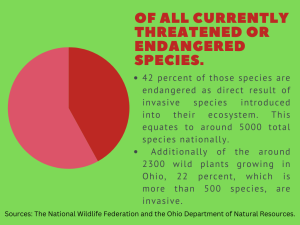
In addition to the Amur Honeysuckle, Feral Swine pose a large risk to the ecosystem. First introduced way back in the 1530s, they can now be found in 38 states including Ohio. Feral Swine goes by many different names but they are most commonly a combination of Eurasian wild boar and escaped livestock that was previously domesticated. They pose a serious threat as they can be a carrier of 30 different diseases as well as 40 parasites which pose a health risk to humans, domesticated livestock and native wildlife that could be vulnerable to those diseases. Furthermore, Swine can cause extensive damage to crops as well as property, “Ecological and economic losses from feral swine damage in the U.S are estimated to be greater than $1.5 billion annually, when combined with control costs,” (ODNR). There are efforts to eliminate the threat of swine on emerging populations but to completely eliminate them will be a large effort. “The elimination of feral swine in Ohio can only be achieved with the cooperation from wildlife managers, agricultural producers, landowners, and sportsmen and women,” (ODNR).
Another emerging threat, the Spotted Lanternfly, causes complications for native plants. The first reported sighting of these was in 2014 in Pennsylvania however they have spread further. They feed on plants which can lead to wilting and in general, be less resistant to the environment. Other damages can come from infesting plants. They produce large amounts of a sticky substance called honeydew which attracts flies and can grow mold which can reduce photosynthesis for the host plant. While the most common host plants are non-native, these plants such as Grapes and Hops are commonly cultivated crops, and honeydew can seriously damage harvests. Spotted Lanternfly can reproduce in incredibly large numbers, on virtually any flat surface. These eggs appear coated in a light-gray substance. Management efforts mostly revolve around preventing the spread of their eggs via vehicles, quarantines and host plant removal. (ODNR)
Invasive species, while very widespread, can be controlled. So how exactly can that happen? Erin Morckel, a biology and environmental science teacher at Westerville North High School has had to deal with invasive species, specifically Honeysuckle, when starting regenerative farming. The landscape of her farm was infested with the invasive plant which required manually uprooting it to build a garden and ensure it would not return. “The plant is incredibly difficult to kill. If even a small bit of plant material is left alive about the soil, it will rebound. It grows fast and grows to a size and shape that allows it to outcompete grasses and smaller shrubs while spreading to photosynthesize beneath established canopies,” Morckel said.
A good starting place would be to start raising awareness to how this plant specifically affects native species that are important to both the state and the ecosystem. The Cardinal, Ohio’s state bird, as well as other native birds will eat the berries honeysuckle produces. Although this may not seem bad, the bird gets access to additional food sources, it does present other problems.
“It turns out that the chemicals within the berries actually dull the color and appearance of male Cardinals, making them less attractive to females,” Morckel said. Meaning that Cardinal reproduction could theoretically suffer while the seeds continue to be dispersed. Raising awareness to these issues will be the first step to eliminating these species. Emphasizing their great threat so that people will either be concerned enough to volunteer to manually pull them out of the ground, or donate to foundations who may be able to get machines to remove them mechanically. “If we can detail the negative effects on a species that is known to the local population and is generally cared about, issues with invasive species, especially less visible plants, may be taken more seriously,” Morckel said.


